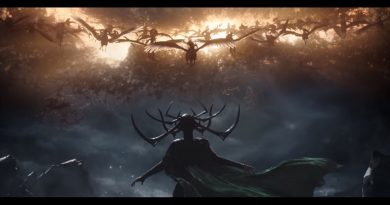‘Black Mirror: Bandersnatch’ gives audiences an amazing new interactive experience
Most millennials and a select few members of the centennial generation — otherwise known as ‘Gen Z’ — remember the classic children series of fiction books known as “Goosebumps.” The premise of the books was to give the reader the chance to create their own adventure that leads to a variety of plotlines that could unfold based on their choices. Fast forward to present day, and with audiences’ obsession with the Netflix original series “Black Mirror,” filmmakers attempt to replicate this phenomenon for a more interactive plot. Netflix’s “Black Mirror: Bandersnatch” asserts itself as an immensely exciting “Black Mirror” episode that entangles the audience in an unforgettable story, while graciously leaving the fate of the characters in their hands.
Set back in 1984, “Black Mirror: Bandersnatch” follows Stefan Butler (Fionn Whitehead), a young adult with a knack for programming as he tries to develop an interactive computer game based on one of his favorite books, “Bandersnatch.” Shortly after his morning routine with his father Peter (Craig Parkinson), Stefan leaves to pitch his idea to TuckerSoft — a software company that produces top of the line computer games. Shortly after his arrival, Stefan meets Colin Ritman (Will Poulter) — a legend in the computer gaming community who also serves as a somewhat omnipotent figure in the film. From there, the journey to finish and perfect his video game becomes wildly complex for both Stefan and the audience alike.
Ten second timed choices are presented to the viewer immediately, providing them with two choices, such as what cereal Stefan will eat in the morning and what music he listens to on the way to his pitch meeting — a choice that also determines the music played throughout the movie. In the first few minutes of the film, these decisions are seemingly small and harmless — although they are quick to escalate. The magnitude of the later decisions hangs with the viewer, and it becomes increasingly difficult to choose an option for fear of what may unfold at their hands. The movie’s fantastic suspenseful effect comes from these very choices, as well as the unpredictability that accompanies them.

“Black Mirror: Bandersnatch” is unparalleled in complexity — without the common partnership with confusion. The plot of the film develops at the hands of the viewers as different audiences may find out more or less than another. As the film progresses, the choices made will often lead to ‘endings,’ where viewers have the option to either continue from a key moment and try another option or to end the film and roll to the credits. When all five of these different endings appear, they are presented in a way that feigns insignificance. However — much like the decisions in the actual film — the choice to continue after each ending develops into questions that represent the themes presented in the film, and it furthers the plot. Fans of the rest of the episodes of “Black Mirror” may also notice several references to previous episodes as a pleasant homage to the original series through the use of little Easter eggs.
While it may seem questionable upon first glance, Netflix’s “Black Mirror: Bandersnatch” takes a much-needed leap in being an interactive film and roots itself in the minds of its audiences through its unforgettable story and the intense decisions within it. This film sets the foundations for how the genre of interactive storytelling can be done correctly and hopefully marks the beginning of many more to come.







